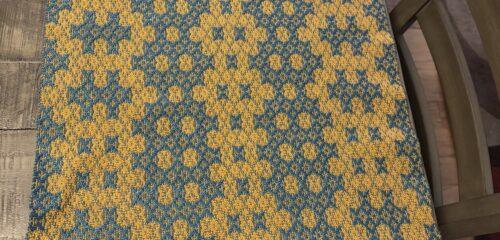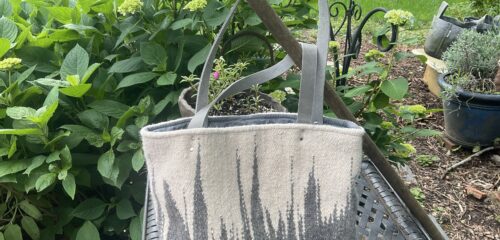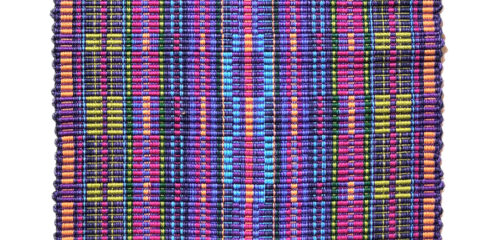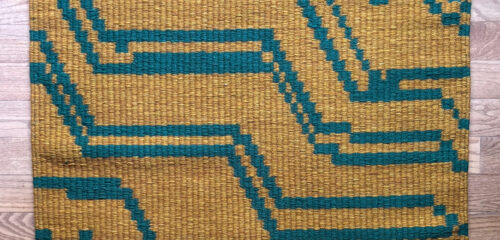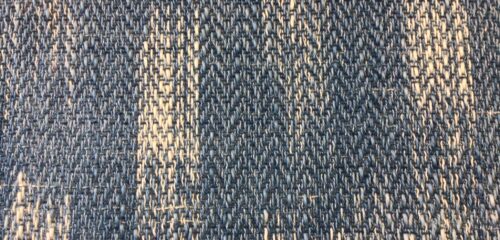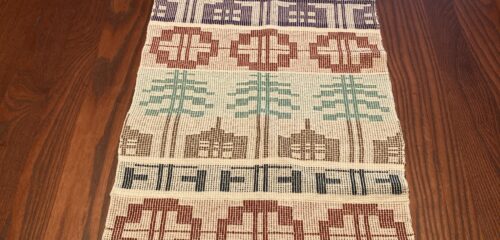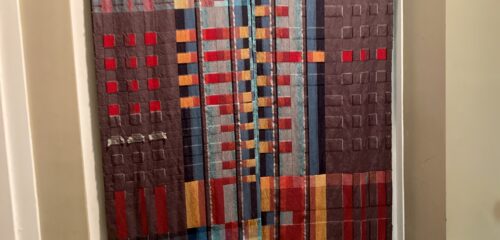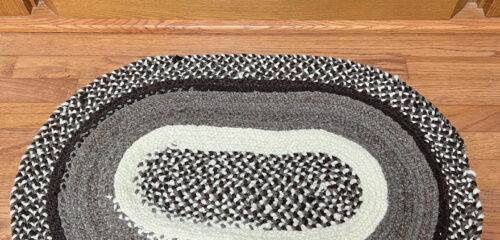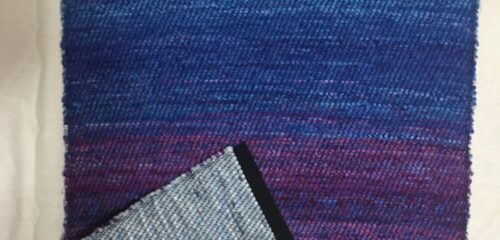MAFA2025-3933
The piece is woven using Deborah Silver’s split-shed technique. I hand-drew the cartoon for the pickup oatterning. I warped my table loom with enough for two runners. The first I cut off and used for a weaving guild challenge. This is the completed one shown...


